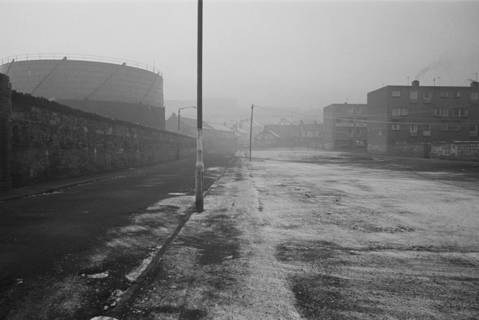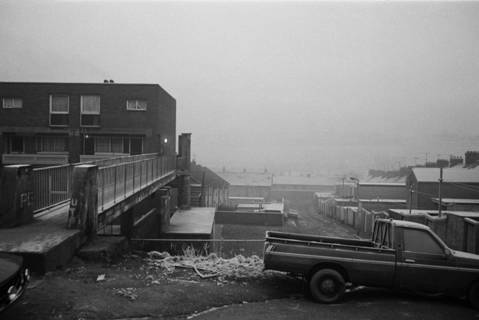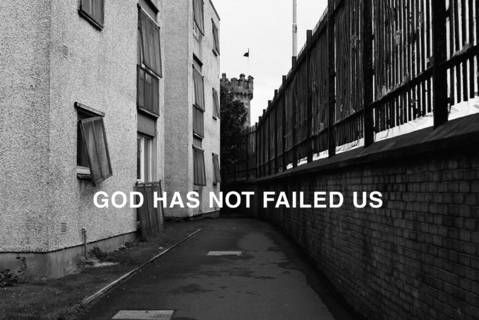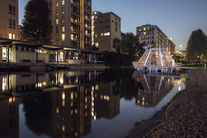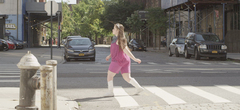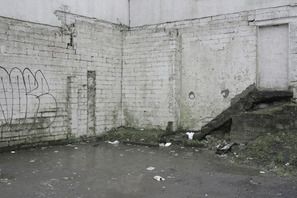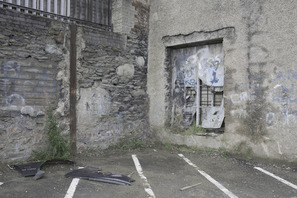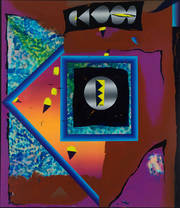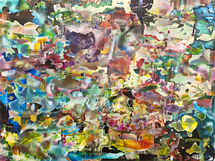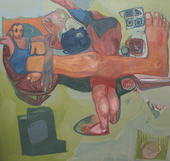December 18, 2016 - February 26, 2017
Thicker than water. Family concepts in contemporary art
Opening: Sunday, December 18, 11 am
In view of changing realities family has to be thought in a new way. At the latest with the protests of 1968 criticism of rigid role models and patriarchal power is part of the social mainstream. Yet as soon as it comes to defining what family is the topic develops a new explosive force. What makes up the families core/the core of the family?Besides value and generational conflicts social debates about family are coined by the development of new technologies like IVF or surrogacy as well as alternative lifestyles/outlines of life. Instead of a biological legitimacy family can also be perceived as a production process or doing family. Therefore the development of communities und society interact and lead to the question if the notion/concept/idea of family can be interpreted individually and filled with all forms of living together. Thus family affairs do not only have a private, but also a politically dimension. They are expression of changing social structures and different family conceptions
Personally involved or at a distance the artists reflect the present status of family. Which meaning does family have in view of globalized working conditions and pluralized ways of life? In what way do networks and friends replace classical family structures?
Familia, the Latin origin of the word family, soberly translates to household. Instead of blood relationship and community of fate the term rather suggests a community based on voluntary commitment and with that captures the plurality of current family designs/concepts. Is family only a cause of free choice nowadays and no longer of genetic chance?
The exhibition presents works by Candice Breitz, Omer Fast, Simon Fujiwara, Badr el Hammami & Fadma Kaddouri, Nan Goldin, Verena Jaekel, Haejun Jo, Nina Katchadourian, Byung Chul Kim, Ragnar Kjartansson, Neozoon, Johannes Paul Raether, Gillian Wearing and Tobias Yves Zintel.
This is a cooperative project with the Kunstpalais Erlangen, where the exhibition is shown from September 24 until November 27, 2016
4. November – 13. November 2016
PRACTICE PROCESS PROGRESS.
Ausstellung des Weißenhof-Programm (Meisterschüler) der Akademie der Bildenden Künste Stuttgart
Eröffnung: Donnerstag, 3. November, 19 Uhr
Ein Projekt zum Dazwischen – zwischen Studium und freier künstlerischer Praxis. Zwischen „behütender“ Hochschule und freier Wildbahn – junge Künstlerinnen und Künstler zeigen Projekte und Werke, Fotografien, Bilder und Videos, zu Beginn ihrer Karriere.
Die Absolventen des ersten Jahrgangs des Meisterschülerprogramms an der Akademie der Bildenden Künste Stuttgart stellen Projekte, Prozesse und Ergebnisse in einer Ausstellung und in begleitenden Veranstaltungen zur Diskussion.
Mit Arbeiten und Projekten von Anna Gohmert, Gruppe CIS, Valentin Hennig, Anna Huxel, Georg Lutz, Ann-Kathrin Müller, Andreas Bauer (Salon Büro), Benjamin Bronni (Salon Büro) und Fabian Treiber (Salon Büro) .
Informationen auch unter meisterschueler.abk-stuttgart.de
25 May - 21 August 2016
GOOD SPACE
Political, Aesthetic and Urban Spaces
Opening: Wednesday, 25 May, 7 pm
Please visit our project-webspace: goodspace.villa-merkel.de
With an exhibition entitled GOOD SPACE - Political, Aesthetic and Urban Spaces presented in the Villa Merkel, the Bahnwärterhaus, and the Merkel Park, the Galerien der Stadt Esslingen is investigating various aspects of public spaces, including ones that are actually constructed, set up in digital networks, or rendered concrete as the results of research. The exhibition takes up perspectives of contemporary art, architecture, and science. The focus is on unused potentials, on opportunities and new paths in accordance with the motto: “Let us give the future a home in public spaces!”
GOOD SPACE illuminates such current issues as how, in view of limited resources, the future can be shaped and social life can be successful. The architecture of informational structures is examined as well as questions of surveillance and invisibility in digital space. There is a vivid presentation of how the study of the evolutionary processes of plants can give rise to future-relevant methods in the areas of bio-design or urban ecology....
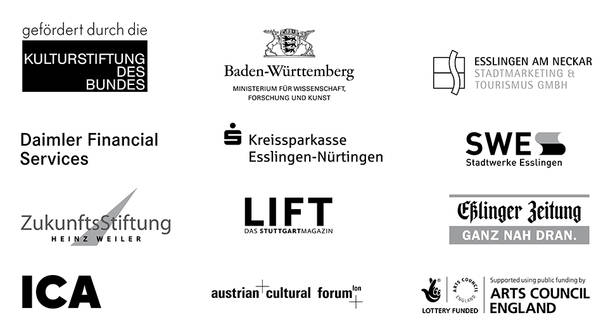
A cabinet display within the exhibition is entitled EVERYTHING IS ARCHITECTURE: Bau Magazine from the 60s and 70s. It was first curated for the ICA in London by Juliette Desorgues and is now making a guest appearance at the Villa Merkel in Esslingen.
GOOD SPACE – Political, Aesthetic and Urban Spaces, this year's edition of Crossing Media, is accompanied by a rich array of lectures, workshops, and even concerts. A direct bridge into the city is established by an outreach program of exploratory walks that make it possible to experience the city in a special way.
GOOD SPACE presents works and projects by Los Carpinteros (CU), Martin Creed (GB), Binelde Hyrcan (AO), Jasper Niens (NL), Jon Rafman (CA), Hito Steyerl (DE), Ryan Trecartin (USA), Christoph Wachter & Mathias Jud (CH), Stephen Willats (GB), PNAT (IT), and raumlaborberlin (DE), SAM ARKA (DE), as well as EVERYTHING IS ARCHITECTURE (AUT/GB), a cabinet display within the exhibition.
We would like to express our heartfelt appreciation to our sponsors and partners
25 May – 21 August 2016
ICA - EVERYTHING IS ARCHITECTURE: Bau Magazine from the 60s and 70
Opening: Wednesday, 25 May, 7 pm
EVERYTHING IS ARCHITECTURE: Bau Magazine from the 60s and 70s was initially curated for the ICA, London, by Juliette Desorgues. As a cabinet-display the show has now a guest appearance at the Villa Merkel in Esslingen.
This display focuses on the Austrian architectural magazine Bau: Zeitschrift für Architektur und Städtebau (Bau: Magazine for Architecture and Urban Planning). Originally named Der Bau, the magazine was published by the Central Association of Austrian Architects and established in 1925 as a trade publication.
The magazine also showcased the radical work of a younger generation of Austrian architects such as COOP HIMMELB(L)AU and Haus-Rucker-Co, and helped to provide a window to the major international, architectural and artistic scenes of the time, publishing the work of London-based architectural group Archigram and American architects and artists Buckminster Fuller and Claes Oldenburg.
https://www.ica.org.uk/whats-on/everything-architecture-bau-magazine-60s-and-70s
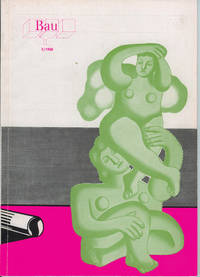
Bau: Magazine for Architecture and Urban Planning<br/> issue 3, 1968 <br/> Published by Zentralvereinigung der Architekten Österreichs <br/>Courtesy the architects, artists and their estates
At a time when experimental architectural publications were flourishing internationally, Bau demarcated itself through its glossy, large-sized format and use of advertising. It retained a playful quality, experimenting with typography and design, and drawing on a wide range of imagery from architecture, urbanism, art and popular culture. This interdisciplinary approach was crystallised in a 1968 issue of Bau in which the influential architect Hans Hollein boldly claimed that ‘Everything is Architecture’. From a lipstick, a pill and a portrait of Che Guevara to an astronaut suit and the radical performances of the Viennese Actionists, all could be considered architectural.
Coinciding with the […] display are a series of short films by Austrian architects and architectural collectives of the period.
14 February - 24 April 2016
Willie Doherty
Home
Opening: Sunday, 14 February, 11 am
In addition to a selection of recent video works "The Amnesiac" (2014), "Remains" (2013) and "Buried" (2009) the exhibition will present a new video work, which will be on view at Villa Merkel for the first time. The exhibition will also include a number of new photographic works and a selection of works from the recent past.
These latest works will continue Doherty’s meditations, in video and photography, on the changing political landscape of Northern Ireland. Doherty examines the borders between the present and the past and between reality and memory. Doherty’s use of the camera reveals his interest for surveillance technologies on the one hand and his concern with the tradition of romantic landscape on the other.
Our Attention shifts from day to night and from urban areas to natural sites, from panorama to close-up. The camera seems to wander from the familiar path and to lead us into blind alleys or dead spaces.
Between the opposing poles of authenticity and fiction, his videos explore the possibilities and conditions of the filmic apparatus, drawing on genres as action film, auteur film, and documentary. In a visual sense he also uses a technique which is comparable to a criminal novel: He increases the indistinguishability between a concrete threat and a mental state, the fear of nothing, the fear of the indefinite. Narrative structures and possibilities of interpretation remain unsettled. Willie Doherty‘s photographs and videos force us to deal with the fact that we can no longer trust the image.
We would like to thank Alexander and Bonin, New York, Galerie Peter Kilchmann, Zürich, Galería Moisés Pérez de Albéniz, Madrid and Kerlin Gallery, Dublin for their generous support.
6. März – 17. April 2016
Bahnwärterhaus:
BEWEGUNG AUGE KOPF HAND 2016
Mathieu Bessey, Peter Chevalier, Tobias Diehm, Fabian Fobbe, Markus Heller, Adam Henry, Steffen Kugel, Sascha Patzig, Lars Rasmussen, Christian Rothmaler und Sarah Verbeek
Eröffnung: Sonntag, 6. März, 11 Uhr
Elf internationale Künstler zeigen in der Gruppenausstellung neue Positionen zur zeitgenössischen Malerei. Die unterschiedlichen stilistischen Ansätze der Künstler verbinden sich in dem Glauben an die unendliche schöpferische Vielfalt des Mediums Malerei und die daraus entstehende frische Motivation für formale Möglichkeiten.
Die Freiheits- und Phantasiebegabungen der Künstler, verknüpfen sich mit einem tiefen Verständnis für Komposition, Farbe und Form. Trotz der formalen Unterschiede sickert/destilliert sich ein gemeinsamer ironisch-mystischer Seelensirup aus den gezeigten Werken, der den Kit, die homogene Verbindungsknetmasse, der Ausstellung bildet.
Ein intensiver Blick auf die einzelnen Bilder durchbricht sehr schnell die Oberfläche der leichtfüßigen Ironie und lässt eine konsequente künstlerische Kraft entdecken, die genau weiß, welcher malerischen Mittel sie sich bedienen muss, um energetische Bild-Kraftfelder zu erzeugen. Bilder als pfiffig-gewiefte Erfahrungsschwämme, vollgesogen mit kunsthistorischen Spielereien und Verbeugungen. Die gemeinsame Haltung der Künstler, ein Habitus der es sich zum Ziel macht, die Grenzen der Malerei weiter auszudehnen, ohne den Kern zu verleugnen. Eine selbstbewusste Affirmation dieses alten Mediums 2016.
Kuratoren: Sascha Patzig, Tobias Diehm
23. Januar 2016 – 28. Februar 2016
Bahnwärterhaus:
Under Construction II
Eröffnung: Freitag, 22. Januar, 19 Uhr
Dave Bopp, Tilman Brandmeier, Benjamin Gräbner, Timo Sacher, Hanna Schwaderer, Martin Schweikert, Min-Seob Ji, Nigatu Tsehay Molla, Daniela Wolf
Under Construction ist eine zweiteilige Ausstellungsreihe, die das Bahnwärterhaus als Plattform für junge, internationale Künstler nutzt. Der Titel steht für einen nicht abgeschlossenen Prozess. Die Arbeiten sind offene Konstruktionen, die weiter fortführbar sind. Neun Positionen werden vorgestellt. Ein besonderer Fokus liegt in diesem Teil auf aktuellen Tendenzen der Malerei
Mit Dave Bopp, Timo Sacher, Nigatu Tsehay Molla und Martin Schweikert sind vier Malerpositionen in der Ausstellung vertreten. Wie selbstverständlich fließen digitalisierte Elemente, Filmbezüge oder Graffititechniken in ihre Malereien ein.
So sind beispielsweise die Malereien des Schweizers Dave Bopp in Schichten angelegt, welche sich gegenseitig kommentieren, paraphrasieren und weiterschreiben. Die kleinen, organischen, abstrakten Formen treten zueinander in Beziehung. Die am Computer generierten Formen werden in mehreren Schichten und mit diversen Techniken auf den Bildträger aufgetragen. Diese „Sampletechnik“ eröffnet vielfältige Referenzen auf mehreren Ebenen - so zum Beispiel zu Remixtechniken in der Musik.
Timo Sacher dagegen realisiert mit einem reliefartigen Bildträger aus Gips ein räumliches Farberlebnis aus gesprühter Farbe. Die figürliche Malerei von Nigatu Tsehay Molla ist unter anderem vom Film beeinflusst. Anders als im Film handelt es sich jedoch nicht um klare Kameraperspektiven. In einer Kollision unterschiedlicher Blickwinkel verzerren sich die Figuren.
Mit einem spitzbübischen Augenzwinkern lehnen sich die Arbeiten von Hanna Schwaderer und Tilman Brandmeier an den Ausstellungstitel „Under Construction“ an. Tilman Brandmeier hat die leidige Aufgabe des Bilderaufhängens für die Ausstellungsdauer an ein kinetisches Konstrukt delegiert. Die Aufgabe wird jedoch nie zu Ende gebracht. Hanna Schwaderer verpackt den Vorgang der Bilderherstellung in eine Transportkiste.
Weitere Beiträge kommen von Ben Gräbner, der in seinen skulpturalen Arbeiten Auswirkungen auf Materialien untersucht und von Daniela Wolf, die ein Video präsentiert.
In einer Perfomance am Eröffnungsabend von Min-Seob Ji entstehen unter dem Titel „Miraculous construct“ Türme aus Origamibooten. Die fragile Konstruktion des Südkoreaners ist eine Hommage an die legendäre Performance „In search of the Miraculous“ des Künstlers Jan Bas Ader aus dem Jahr 1975. Der Künstler verschwand spurlos bei dem Versuch einer performativen Überquerung des Atlantiks in einem kleinen Segelboot. Im Angesicht der aktuellen Flüchtlingsbewegungen über das Meer bekommt diese historische Performance eine neue Facette.
Kuratorin: Anka Wenzel


